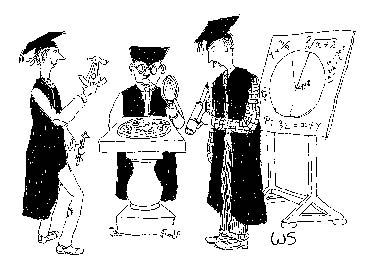There recently left these shores a benign and fecund angel of the automotive realm, Dr Franz Josef Paefgen, retiring chairman and CEO of Bentley. Benign because he was unfailingly polite and helpful and understood the Bentley tradition and the sort of people who buy into it. Indeed, he empathised with a wider tradition than that: he must have been the only Bentley (or any other?) CEO who would sometimes drive to work in his Morris Minor.
Fecund because, despite his appreciation of tradition, he was thoroughly modern in his approach to engineering and product development. It would be an exaggeration to say that without Dr P, as he was known, there wouldn’t be a Bentley today; but it mightn’t have been the success it has, for all VW’s half-billion investment.
Like nearly all good CEOs, Dr P was always a company man. He joined Audi in 1987 after engineering engines for Ford, by 1995 was head of engineering, by 1997 CEO. There he worked under Ferdinand Piëch, head of the VW Group, whom he describes as ‘the most brilliant engineer I’ve met’. Piëch was also a demanding boss: if you were in a group meeting and couldn’t answer his question he’d say, ‘Get on your mobile now. We’ll wait.’ And they’d all sit in silence.
The challenge at Audi was to decide whether it should be Opel/Ford or BMW/Mercedes. Rightly, Dr P went for the latter. When he proudly announced that Audi quality at last matched the Mercedes E Class, Piëch merely nodded and said, ‘S Class is your objective.’ After Dr P had served five years as CEO Piëch offered him Bentley. He nearly left the group at that point but Piëch urged him to stay and do it. The citizens of Crewe should honour him.
Asked what he thought were his main achievements at Crewe, he did not say — as he might have — ensuring Bentley’s independent survival, introducing the Continental GT (the model that quadrupled sales, creating a new market for itself), launching the Flying Spur, the world’s fastest four-door saloon, or re-engineering and giving new life to the company’s fabled V8. The last, incidentally, showed why it makes sense to have an engineer running a car company: only someone like Dr P would have had the confidence to challenge his fellow engineers on their own ground and insist that the engine they’d abandoned be resuscitated and remade.
Instead, Dr P rates his own achievements as winning Le Mans for Bentley for the first time since the 1920s glory days, presenting the royal Bentley to the Queen (the one she used recently at someone’s wedding) and developing the new flagship Mulsanne, successor to the Arnage.
Dr P attributes the success of the sprawling, multibrand VAG empire to encouraging brand independence while ensuring that there’s always someone who looks at the whole (precisely the opposite of what British Leyland did). He leaves the company in the doubtless capable hands of Wolfgang Dürheimer, whose pedigree as former head of R&D at Porsche suggests another rigorous engineer-turned-manager. It’s a combination that the VAG seems to get consistently right.
It thus seemed a good time to renew acquaintance with Dr P’s best-known creation, the Continental GT. Launched in 2003, it has undergone various improvements since but none, I think, as transforming as this. The drawback with the original was the rear end. This revision is more sculpted and scalloped, with greater use of flattened and angled surfaces. It’s altogether more elegant while losing nothing of the powerful haunches and latent menace of the original, a triumph for designer Dirk van Braeckel.
The interior has had a makeover, too, with thinner but still comfortable seats to create more rear legroom. It’s lost 65kg (about a hundredweight in real money) and the 6-litre W12 is both more powerful and more economical (17.1 mpg combined). Tops is given as 198mph but I suspect that, as with the Spur, that’s the official tyre rating. The real top speed is probably well north of 200mph. The six-speed auto is lightning quick and capable of double downshifts.
It’s a while since I’ve driven the original but this car is immediately more accommodating and willing. You never feel you’re struggling against it and you can stun yourself with a twitch of your right foot (0–60mph in 4.4 seconds — yet it weighs 2.75 tons). Standard wheels are 20 inch but even with the — to my mind, less desirable — 21 inch, humps and potholes are unobtrusively ironed out.
The car I had — possibly a preproduction model — suffered from an ill-fitted rear window rubber, a moaning air suspension pump and analogue and digital speedos that never quite agreed. Check before you open your wallet but then raise a glass to Dr P. Once you’ve driven it, you’ll want to send him a crate.






Comments